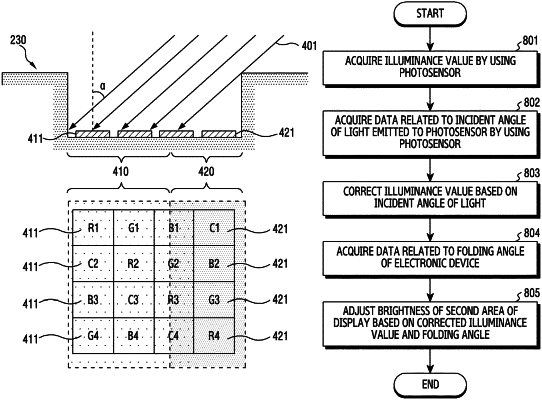| CPC G06F 1/1641 (2013.01) [G06F 1/1677 (2013.01); G09G 5/10 (2013.01); G09G 2320/0626 (2013.01); G09G 2360/144 (2013.01)] | 20 Claims |

|
1. A foldable electronic device comprising:
a foldable housing comprising:
a hinge structure;
a first housing structure connected to the hinge structure and comprising a first face and a second face opposite to the first face; and
a second housing structure connected to the hinge structure and comprising a third face and a fourth face opposite to the third face, the second housing structure forming an angle of an allowed range with the first housing structure through the hinge structure;
a display comprising a first portion corresponding to the first face, and a second portion corresponding to the third face and is connected with the first portion;
a photosensor disposed inside the foldable housing and comprising a light receiver configured to measure an intensity of light; and
at least one processor operatively connected with the photosensor and the display,
wherein the at least one processor is configured to:
acquire an illuminance value by using the photosensor,
acquire data related to an incident angle of the light emitted to the electronic device by comparing an intensity of light shining on a first area of the light receiver with an intensity of light shining on a second area of the light receiver,
correct the illuminance value based on the data related to the incident angle of the light,
determine a brightness of the first portion, based on the corrected illuminance value, and
determine a brightness of the second portion, based on the corrected illuminance value and an angle formed by the first housing and the second housing.
|